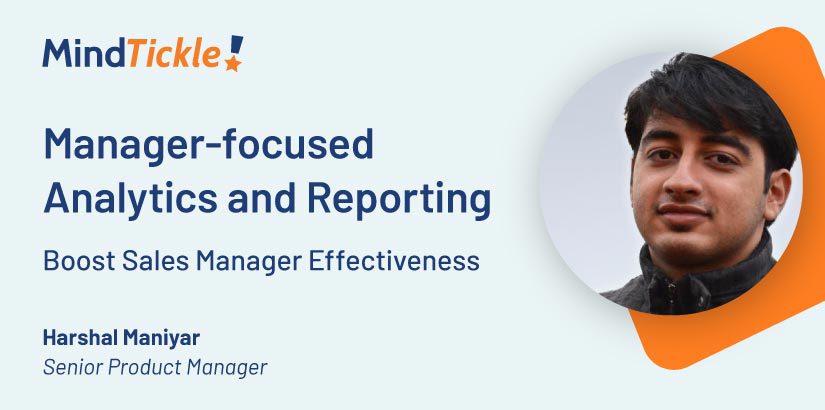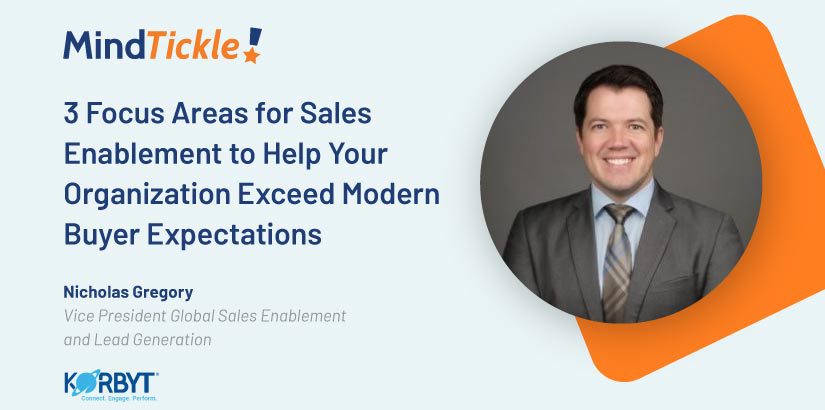There is no denying that 2020 has had an impact on the way by which sales professionals engage with their customers and prospects. The biggest shift is the obvious one – the elimination of face-to-face meetings, being replaced with remote meeting platforms. Sales professionals and buyers alike have quickly accepted and adopted this new reality. In fact, in a recent McKinsey & Company study, 80% of B2B decision makers surveyed prefer a sales model where there are more “remote human interactions” or digital self-service instead of in-person. Cited reasons are safety due to the Covid-19 pandemic, ease of scheduling, and expediting the buying experience.
The motivating news is that those same buyers believe the new sales model is just as or more effective than the face-to-face model. When it comes to the level of spend, it is not materially impacted by the buyer/selling engagement being conducted remotely. Nearly 70% of those decision makers would spend $50,000 (USD) or more in a completely self-service or remote interaction.
While there is no doubt there has been a shift, this does not mean that you can sell in the exact same manner remotely that you did in person. This fact presents a unique opportunity for sales enablement teams to highlight and further demonstrate their value and strategic importance to the customer-facing teams and organizations they support. Sales enablement can help sales teams become hyper-focused on improving their virtual engagement capabilities and exceeding modern buyer expectations overall.
There are new skills required to conduct virtual meetings to align to this buyer preference, however the core expectations modern buyers have for the sales professionals they engage with haven’t materially changed. I would argue their expectations they had prior to the pandemic are more heightened in a more virtual setting.
THE TOP BUYER EXPECTATIONS
Let’s now link the current research on “how” buyers choose to engage to “what” they expect when engaging with sales professionals. Looking at Miller Heiman Group’s (Now part of Korn Ferry) most recent Buyer Preferences Study, B2B buyers surveyed have the following four expectations for the sales professionals they engage with above all others:
- Deep understanding of the decision maker’s business: Sales professionals should consistently conduct the appropriate research about their customer’s business and the individuals they engage within each customer meeting
- Demonstrate excellent communication skills: The sales rep must be “crisp, compelling, and concise in every customer engagement”
- Focus on the post-sale: Sales reps should consistently articulate, with all stakeholders on the buying side, what happens after the sale (i.e. sharing the vision what happens after the contract is signed, how is the solution implemented, what to expect once the customer takes delivery of solutions purchased, etc.)
- Provide decision makers with insights and perspective: Sales reps are expected to educate the buyer in each engagement
If you haven’t already, I highly recommend all of my Sales Enablement colleagues (sales professionals and leaders as well) read this data-rich and eye-opening study. It will provide context to the 3 opportunities we’ll review below that we have in Sales Enablement to better support our customer-facing colleagues to exceed buyer expectations.
We could try to tackle 10 or 15 challenges and do them at a satisfactory level. Or we can be laser-focused on the critical few and execute on them exceptionally well, which in my experience typically yields better outcomes. As such, I am choosing to focus on 3 key elements that rise to the top of my organization’s priorities:
1) Onboarding: Defining what your organization considers a fully onboarded customer-facing team member to accelerate ramp appropriately
Whether your sales onboarding program is several weeks or months, no one would deny the desired outcome is to ensure your new sales reps reach revenue productivity as quickly as possible. But what does your organization consider as being a fully onboarded sales rep? This is clearly a journey and not an event and I recommend you start with the end in mind by collaborating cross-functionally and deciding on clearly defined KPIs and milestones that align to your organization’s definitions of an ideal sales rep, sales engineer, or customer success rep.
To ensure your constituents are learning and retaining knowledge over longer periods of time. I suggest a hybrid onboarding model including on-demand e-learning courses, benchmarking, assessments, video-based certifications, leader interactions, and when we can, in-person classes. Layer the continuous education to consistently reinforce what they learned previously and build incrementally.
Your onboarding program shouldn’t become a “check-the-box” exercise of items to complete where magically you produce a fully ramped sales rep. It should be a program that is challenging, aligned to their role, engaging, true to their real world, and be consistently reinforced.
Think of your new hire ramp program in this way: No matter the duration of your formal program, it is an allotted amount of dedicated time that your new hire will never be afforded again to invest in themselves so thoroughly. To that end, it’s imperative it be a program that is measured, consistently reinforced, entrenched with adequate skills training on how to exceed buyer expectations, and aligned to your sales and organization’s strategy.
Some questions to consider with respect to your onboarding program to support exceeding buyer expectations:
- How does your current onboarding program currently set your sales reps up for success to align to the buyer expectations we reviewed previously?
- Does it prepare them to plan for and execute on successful customer engagements through videoconferencing such as Zoom or Teams?
- Are they provided proper soft skills training to help them sharpen their communication skills to be better communicators during customer engagements?
- Are your new hires taught how to conduct proper research ahead of customer meetings such as making it a common practice to read annual reports, 10-Qs, or leveraging LinkedIn to learn more about key stakeholders they might meet with? To ensure at each customer engagement your sales reps demonstrate they are well-versed in their customer’s business, industry, market, and current or future strategic imperatives.
- Do they properly learn throughout your onboarding program how to properly educate and provide valuable insights at each engagement whether by video, email, or phone?
2) Effectively Developing Sales Teams by establishing a Coaching Culture
A first-line sales leader’s job is one of the most difficult in sales. The two primary objectives of a first-line leader are to help their team make their number and develop their people. Both objectives are strongly connected. What’s unfortunate is that often these leaders are underinvested in and not adequately trained on the skills to make that jump from highly successful sales rep to a people leader in the sales org.
An area of focus for sales enablement (in partnership with senior sales leadership and HR) would be to define the ideal profile for a successful first-line leader within your organization. What are the skills, competencies, level of EQ, and so on required? Secondly, once defined if your organization does not have a proper sales coaching program or framework by which to align to and upskill your first-line leaders, as an enablement team it’s never too late to build basic elements to support your first-line leaders to better execute on the two primary objectives.
For example, it could prove to be a quick win to establish a light framework and coaching model where first-line leaders can help develop their teams to improve communication skills, how to best conduct customer research and align to the other buyer expectations we discussed.
Here are some questions to consider about Coaching:
- Are your first-line leaders actively and continually developing their teams? What is the established cadence in which they engage team members for coaching opportunities? Such as weekly 1×1’s, post-call de-briefings, after “ride-alongs”, and periodic opportunity reviews. Having the right cadence provides the windows of opportunity for coaching to take place.
- If you feel your organization’s leader does actively coach, how do you measure and/or track coaching moments that are focused on developing sales reps to better align to your key buyers’ expectations?
- How are their sales reps progressing in improving their sales skills over time?
- Are all reps being developed in a consistent manner across the company aligned to your ideal buyer and their expectations?
3) Aligning Enablement Services to the Buyer’s Journey to Exceed Buyer Expectations
Lastly, we should strongly consider all the points mentioned above as well as how our holistic Enablement services we offer align to our buyer’s journey to further ensure we prepare our sales teams to exceed buyer expectations. Too often I see Enablement teams focus their services on the beginning stages of their sales process or simply offering product training, sales onboarding, competitive intelligence, or all the above. While this is foundational, we should expand upon the initial sales stages and focus our energies on aligning our services to our ideal buyer’s journey, end-to-end.
If our objectives are to exceed buyer expectations, improve the buyer experience and build ongoing trust and credibility, we should ensure that our enablement services (and our sales process to that end), is aligned to the full buyer’s journey. Keep in mind that the journey does not end when the customer signs the contract. Their journey has just begun and is filled with uncertainty if they made the correct buying decision and if outcomes they were assured will be realized.
Remember one of the top four B2B buyer expectations is to focus on the post-sale. While this is more specific to showing your buyers a vision (during the buying cycle) of what happens after a customer signs the contract such as how will your solution be implemented, you would also focus enablement services on those who engage with the customer during the life of the contract. For example, account managers, customer success managers or both if your organization has them. Supporting these teams to execute on customer centric QBRs to ensure your customers are getting past value delivered (getting the expected value for the solutions/services they purchased) or uncovering new opportunities within your install base.
Some questions to consider focused on aligning Enablement services to your ideal buyer’s journey:
- Does your current sales process reinforce your organization’s ideal sales behaviors and customer-centric selling actions that align to your end-to-end buyer’s journey?
- What content do you currently develop that aligns to your ideal buyer’s journey and helps those buyers gain insights and perspective? Such as what valuable content can your sales reps share with prospects or customers that helps educate them or shows your thought leadership during the entire buying cycle?
- How do you leverage technology to offer your customer-facing teams the right content at the right time during your entire sales process?
- What services does your enablement team offer to ensure your sales teams conduct proper and ongoing customer discovery throughout the sales pursuit?
- Do you provide a level of consistency in how your sales, sales engineers, and customer success teams are trained so when they engage with customers during the buyer’s journey there is uniformity in messaging, approach, and process?
TAKING ACTION NOW
What I highlighted in this article does take a level of effort and support, not only by your enablement team but by others cross-functionally within the organization. While offering enablement services to align to buyer expectations might seem like a large undertaking, it doesn’t have to be. There are quick wins that can be achieved, and you can expedite your efforts with the appropriate sequencing of priorities for your organization and/or by engaging a technology partner to support you. As the B2B sales landscape continues to rapidly change, organizations must accelerate their efforts investing in their customer-facing teams with the objective of exceeding buyer expectations. The positive performance gains by doing so are proven in the research. The question is if your enablement services and organization are not currently aligned to exceed buyer expectations, are you ready to take the first step in that direction today?



